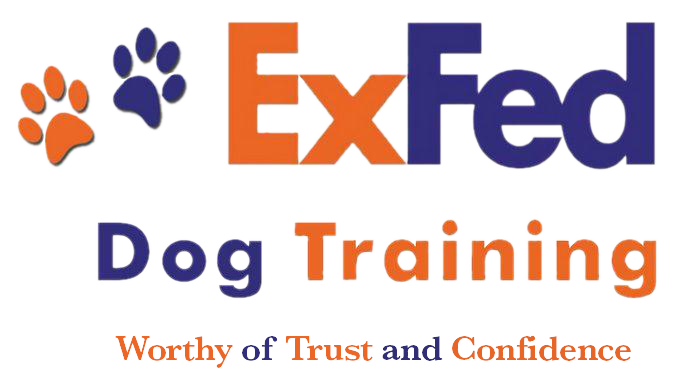Sign up for our latest blog
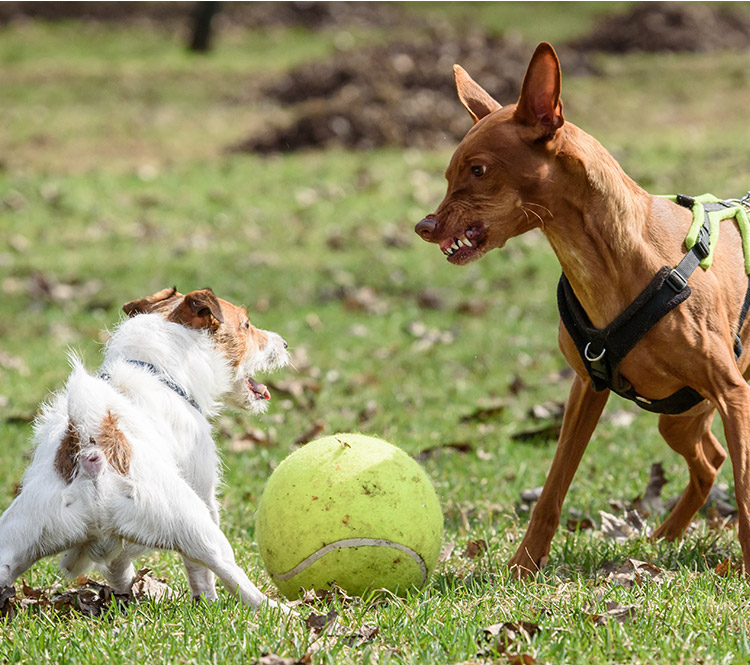
What to do if a Dogfight Breaks Out at a Dog Park
Dogfights are your worst nightmare!
There are many reasons a dogfight can break out, and sometimes we will never know what caused a scuffle because we cannot communicate with our dogs. Supervising your dog and the others around your dog is the best way to avoid fights to recognize dog body language that is inappropriate play. Play fighting is normal and is usually loud, bouncy, and exaggerated where dogs will take turns biting each other with wide-open gaping mouths. If a dog keeps coming back for more, then it’s play; however, it can morph into a fight if the dogs aren’t socially savvy.
The number one rule is not to create another victim by putting yourself between fighting dogs!
Dogs are Apex predators and communicate with their mouths and teeth. Many owners are bit by their own dogs because a stressed dog is actually acting on primal instinct and will not recognize your hand.
A blast from an air horn is the safest and most effective way to break up a dogfight because it startles the dogs long enough for owners to grab their dogs and leash them up. This is why the Brewster Dog Park requires that you keep a leash on your person at all times. There are two Emergency Air Horns in bright orange boxes in both the large and small dog areas.
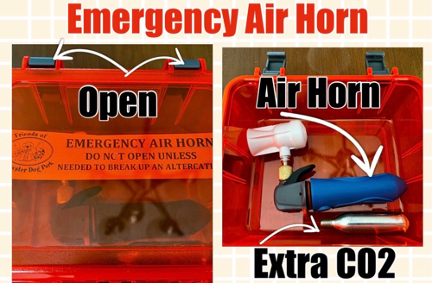
As a last resort, if the air horn is inoperable, I suggest the “Wheelbarrow Method” where two people each grab the hind legs of both fighting dogs and in a coordinated fashion, pull the dogs apart. Be very careful as dogs may redirect on you. Another reason that I don’t like this method is because if dogs are truly locked onto each other, pulling them apart may not work and it can cause more damage. In this case, I use a break stick (strong flat stick) inserted behind the molars to pry open the jaws.
After the fight, check for injuries, exchange information and get a copy of the other dog’s current rabies certificate.
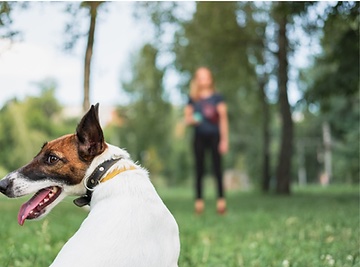
Yielding and Pack Drive
There was a time when our dogs were able to roam neighborhoods, playing with kids and carousing with other dogs. Dogs grew up with finely developed social skills, kids weren’t bitten and there were hardly ever dogfights.
Times have changed, as has the law. We have leash laws and dogs are now required to stay locked up or leashed, and don’t have a chance to develop those social skills. Although the leash gives the owner a (sometimes spurious) sense of control, it cancels the dog’s ability to flee (flight response) a dangerous situation and may make it more fearful and likely to snap (fight response).
To help overcome this, we have created dog parks where unknown dogs are released off leash into a fenced area where they run, shoulder bump, jump over one another, scoot under one another and challenge one another to play. Properly supervised and unwanted behaviors (mounting, bullying, resource guarding etc.) immediately stopped, they come away better able to read other dogs’ body language, and became truer to their nature as a social creature.
Dick Russell was the first dog trainer in the western hemisphere to offer ”Large Field
Socialization” and was the first to recognize “Yielding” as an easy way to establish respect, trust, and leadership. This is different than a dog park because in open field socialization, all the dogs start the activity on leash and stop the activity at the same time back on leash. The owners and dogs all walk in the same direction, in a big circle and do not engage with their dogs, as that is left to the trainer who uses spatial pressure and yielding to break up a potential conflict BEFORE it’s too late. The dogs quickly switch into “pack drive” where they and are all working for the good of the pack. Next time you are at the dog park, walk around the blacktop path and your dog will parallel play keeping you in sight. Turn and go in the opposite direction and your dog will soon follow. Now, imagine if all humans were walking and changed direction at the same time and there was an expert in the middle reading body language, all dogs in the park would be in “pack drive”.
Obedience training is very helpful in establishing you as your dog’s benevolent leader. But in order to have a relaxed, confident pet, that you can take anywhere you want without them becoming frightened or defensive, they will know that you have their back.
If your dog is fear reactive towards other dogs while on leash, the first thing is to give them a job to do (“heel” position while walking) and implement a zero tolerance policy when it comes to meeting dogs on leash. Only let them meet other dogs off leash in very calm, controlled environments, with multiple dogs, and always keep it short and positive.
Do this for several months, combined with engage / disengage games (play interrupted by a “come” or “look” command), and you will eventually have a completely different dog. Your dog may not be overly social, but they will just ignore when they don’t like a dog, and they will engage a bit more when they do.
Rick Alto is a member of the Friends of Brewster Dog Park Board of Directors and the owner of ExFed Dog Training.
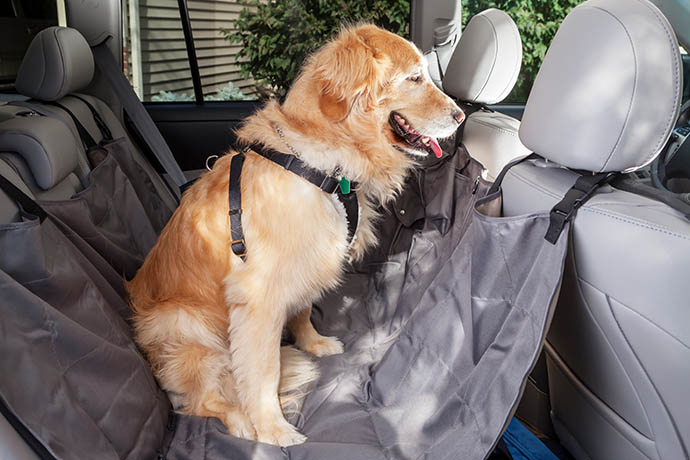
Safety Tips for Dog in Cars
I was traveling to the Town of Brewster, Dog Park Development Committee meeting last night and a car rounded the corner and a dog fell out of the rear window. After putting my hazards on, I jumped out of my truck, leash and treats in hand to check on the dog, which was very dirty, limping and in a dazed state. Thankfully, I was able to stop oncoming traffic and people behind the “dog car” also stopped and the Labradoodle was not seriously injured and was safely reunited with its owner.
Safety Reminder:
With the nice weather arriving here on Cape Cod, it serves as a reminder to ensure that our dog is properly protected. Even allowing your dog to stick its head out of a partially open car window can expose your dog’s eyes to dust, debris and rocks. I ride a Harley Davidson Road King motorcycle and even with appropriate goggles, I have gotten debris in my eye and it is not fun! I know it looks cute when dog’s ears flap in the wind, like they are flying, but even dog’s ears are susceptible to trauma from the wind. God forbid, your dog jumps out or falls out like the Labradoodle, they can sustain serious blunt force trauma injuries from exiting a moving vehicle. Even if your dog does not suffer injuries in the fall, it will be at risk of becoming lost or suffering one of the sad fates (such as being struck by a car) that can befall unaccompanied wandering dogs. Broken bones are very common among dogs that fall from height. Dogs may break legs, ribs, the pelvis, and even their spine. Trauma to the skin is common as well. Impact with the ground may cause significant abrasions, and depending upon the landing some dogs suffer serious lacerations and even degloving injuries, in which the skin is sheared from the body.
Statistics Don’t Lie
We use seatbelts for our children and ourselves because it’s the law, but some neglect to consider the dog. According to a survey by the American Automobile Association (AAA), over 80% of dog owner’s drive with their pets in the car. Sixty-eight percent of U.S. households, or about 85 million families, own a pet according to the 2017-2018 National Pet Owners Survey conducted by the American Pet Products Association. That’s an impressive number of people on the road with dogs in the car. According to AAA, only 16% of people who transport their dogs used proper restraint devices that are crash tested using Government automotive testing. In some states, this is actually the law. Any harness secured to your vehicle will help avoid driver distraction with dogs coming up into the front seat, but unfortunately, many harnesses on the market today are not “crash tested” and may not provide adequate protection in the event of an accident.
Don’t Let your Dog Become a Crash Test Dummy:
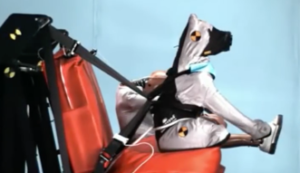
Crash Test Dummy for dogs!
According to floridadriver.com, “In a crash, occupants who neglected to wear their seat belts, as well as any unsecured objects, will be free to move ahead with considerable force into anything unfortunate enough to be in their path.” Unsecured dogs become dangerous projectiles in a rear end crash.
What you can do to protect your Dog
We look for crash safety information and certification whenever we purchase a car or a child car seat. We even may go to a local Police or Fire Department to have the child car seat installed by a certified professional. Why not for your dog? Containing your dog securely while traveling is just as important for the safety of everyone travelling in your vehicle. The safest place for your dog is in the 2nd row seating (back seat), but circumstances may dictate they be in the rear interior cargo area, but they must be restrained to prevent them or the crate from becoming a projectile and soaring through the air into the front seat.
Why you need a Crash Tested Dog Crates and Harness
A harness or crates that have been crash tested are always best and it can be extremely dangerous to travel with a harness or dog crate that does not meet crash safety standards.
Dog Crates:
Dog crates that are not crash tested and certified can burst apart, and your dog may be ejected or escape or be harmed by protruding shrapnel from the plastic or metal crate that has failed. Your dog may survive the crash but sustain injury after the crash or while loose on a roadway. A properly engineered crash tested crate, which is properly secured will maintain its integrity to keep your dog safely contained and avoid danger to human occupants in the vehicle.
Dog Safety Harness:
A crash certified harness will have thick padding, reinforced straps to protect your dog and will have thick metal buckles that will not fail during a crash.
How to Select a Crash Test Certified Pet Safety Product:
- Make sure the product is Crash Tested using Government Automotive Safety Standards
- If you select a crate, look for one with a safety escape hatch and crumple zone protection
- Check the manufacturers safety record
- Ask the manufacturer about their experience and history
- Request copies of manufacturer’s certifications
- Proper installation is extremely important and always use in the manner tested
- Do not hesitate to contact Customer Service and ask questions
Why it’s Important to restrain your Dog in the Car:
According to the National Highway Traffic Safety Administration (NHTSA) there were 5,687,000 crashes in 2013 with 1,591,000 injuries and 32,719 fatalities. Of that, there were an estimated 172,000 children injured in those traffic crashes. There is a good chance there were pets in these vehicles since 34.4 million American households drive with their pets. Over 80% of those pets were likely unrestrained, which means those pets were most likely injured, and at the very minimum, in shock.
- 84% of dog owners traveling with their dogs are not retraining them
- Only 16% of people who transport their dog use proper safety restraints
- 52% of dog owners reported have petted their dog while driving, but I suspect this figure is closer to 100%
- 17% of drivers allowed their dog to sit on their law while driving
- 13% of drivers admitted to giving food or treats to their dog while driving
- 4% of drivers acknowledged playing with their dog while driving
Traveling with your pet can be extremely enjoyable, but ExFed Dog Training desperately wants you to be educated and travel safely and responsibly with your dog. It’s not just about the safety of your dog, but the safety of all human occupants as well. You owe it to yourself, your passengers and your beloved dog to make everyone’s trip as safe as possible.
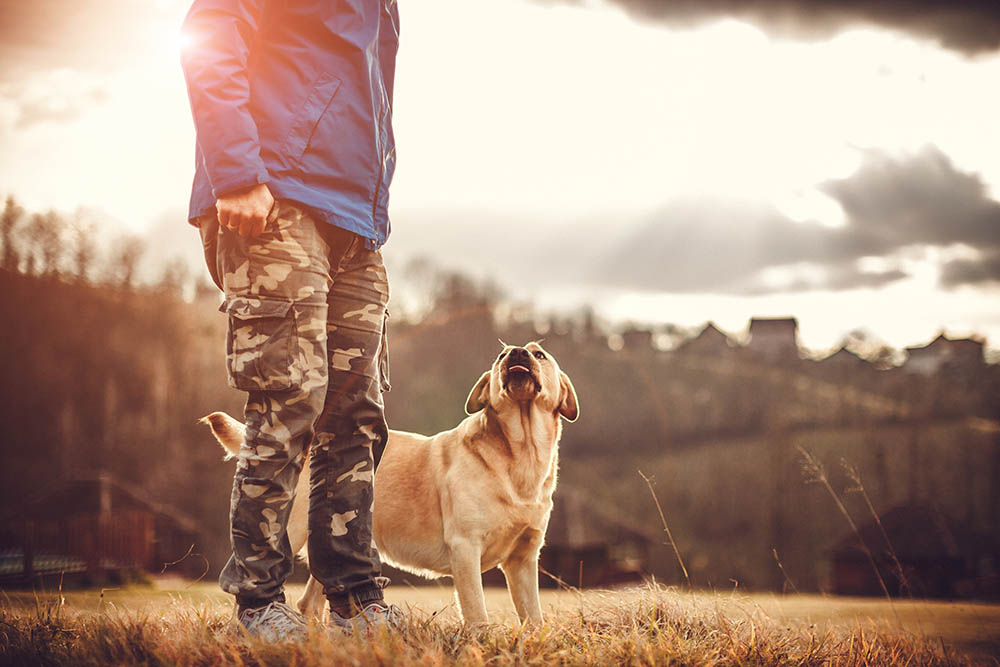
How to Pick the Best Dog Trainer
If you’ve just got a dog and its been years since you’ve owned a dog or you just want professional help to get started on the right foot in building a better relationship with your dog you will search for a dog trainer. If your dog barks at other dogs on a walk, is snapping and growling with toys or you are having issues with potty training or housebreaking, you will look for a dog trainer, as you desperately need help.
Your dog is a member of your family, a loved one, and you should use due diligence in selecting a dog trainer to assist you in building a better relationship between you and your dog. You need to ensure that your dog trainer is worthy of your trust and confidence. Before you spend a dime of your hard-earned money on your precious pet, do your research to determine if a potential trainer is the right fit for you and your dog.
Dog training is an unregulated industry. Unfortunately, anyone can print business cards, hang out a shingle and call himself or herself a dog trainer, so the nearest dog trainer may not be the “best” dog trainer. The cheapest dog trainer is usually not the best dog trainer, since great dog trainers regularly attend continuing education workshops and seminars to stay proficient and likely have spent tens of thousands of dollars on their education and certification as a dog trainer, and YOU are reaping the benefit of their investment.
You need to ask yourself what you need from a dog trainer and be clear on what you want your dog to learn, so that you can set appropriate goals and expectations. A dog is not an “appliance” that is being taken to a dog trainer to be “fixed”. Every dog is unique and be wary of trainers or big box stores that use a one-size-fits-all or “cookie-cutter” approach to dog training. In most cases, the dogs have developed bad habits that need to be changed through positive interactions and consistency on the part of the human. For these reasons, I prefer dog trainers that use a balanced relationship-based approach to dog training.
Look for a trainer who provides more than just the basic training techniques. Dogs and humans have different ways of looking at the world, and the more you understand your dog’s perceptions, the better prepared you will be to meet their needs and build a positive and healthy relationship with your dog. Dog training lessons should include information about dog behavior, dog communication, and most importantly how dogs learn.
You should ask open-ended interview type questions so that trainers can explain their methods, tools and philosophies, and at a minimum, you should ask:
- What is your educational background and experience in the area of dog training?
- What are your credentials and do you have any professional certifications?
- Do you belong to any professional associations and do you attend their educational conferences?
Find an International Association of Canine Professionals (IACP) Approved Dog Trainer:
https://www.canineprofessionals.com/find-a-professional
- Will you provide me with a list of references?
- What kind of follow-up do you provide to your clients?
- What services do you provide pet owners? (i.e. Canine Good Citizen evaluation; Therapy dog certification; Nutrition and wellness counseling)
After ensuring that the dog trainer is competent and qualified, then next, and possibly the most important element of picking a good dog trainer comes from your gut. Make sure you are comfortable with the trainer’s philosophy and their approach. Speak to the trainer and get a feel for their personality and people skills before making a decision. Ask yourself, are they ethical and trustworthy and do I feel comfortable with the trainer? You need to trust that the dog trainer you select will be the right teacher for you, your dog, and your dog’s individual needs. Great trainers understand that their job is to teach you to train your dog. First-rate dog trainers understand the importance of getting the whole family involved in training the dog and “on board” for consistency. This includes the whole family speaking the same language (cues or commands) to the dog and being clear on what behavior they are seeking from their dog, otherwise the dog will be confused and that is unfair to your dog. Great dog trainers understand that YOU are vital in the training process and insist that you as an awesome owner understand that you will need to be a benevolent leader to your dog, by being fair, consistent and persistent.
The definition of insanity is doing the same thing over and over again, expecting different results. Something needs to change and dog training is the way to shape new positive and desirable behaviors in your dog. Your job is to reinforce those behaviors until they become a new habit or a way of life.
An excellent trainer is a wise investment of your time and money to ensure that you have a lifetime of happy and harmonious living with a well-behaved dog. I have seen all too many clients that have gone to three or four different trainers before me, and all have failed to get the desired results. This is a considerable waste of time and money and at ExFed Dog Training, we certainly are not the cheapest dog trainer’s around, but we are competent and passionate about providing the highest quality ethical dog training on Cape Cod in the Greater Boston Metropolitan area.
If we accept you as a client, we guarantee that your dog will not forget the cues or commands that we teach them for the life of the dog. Dog training is a collaborative effort and YOU need to follow through and do YOUR part in this important partnership, our good name will be associated with your dog and we want each of you to be our “ideal client” and follow through with training to bring out the best in your dog and enhance your relationship. Remember, dogs are a lot like, kids, they will test you, and if you give them an inch, they may just try and take a mile. Through our mutual partnership and with your benevolent leadership, we will help you meet your goals and expectations for your dog. If ExFed Dog Training trains your dog, you have the opportunity to become part of the ExFed Dog Training Family where we are committed to improving the positive relationship between you and your dog with balanced dog training.
